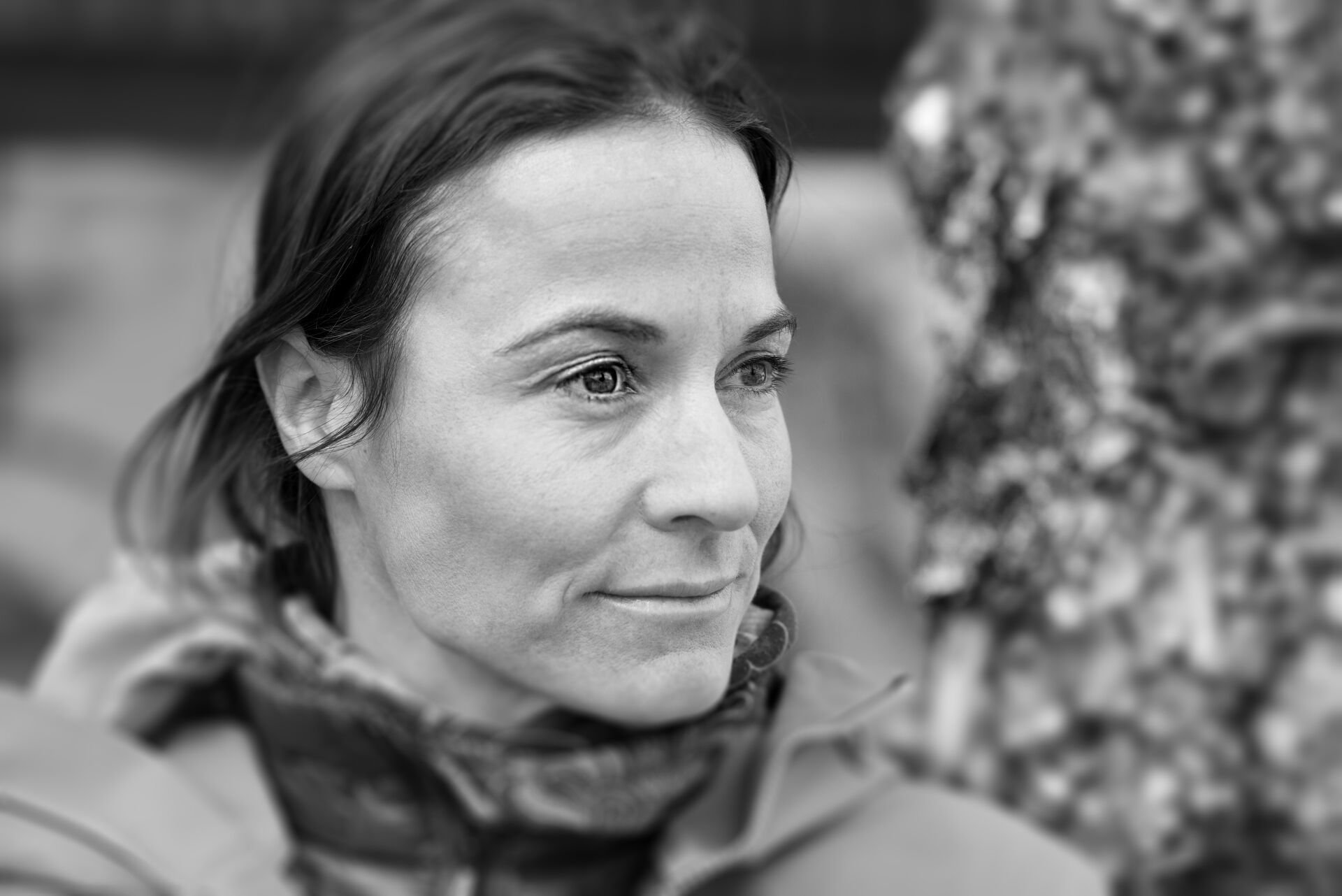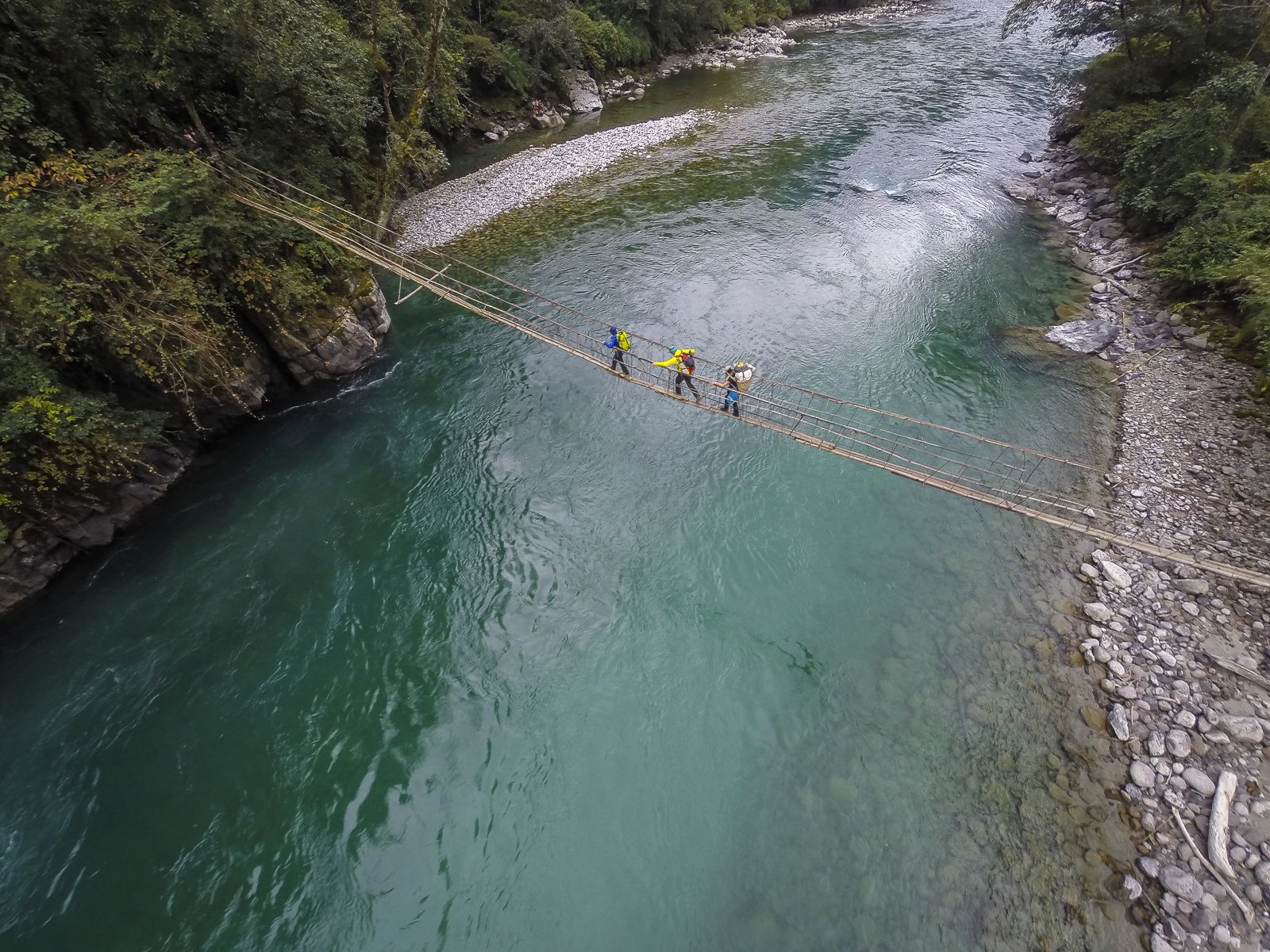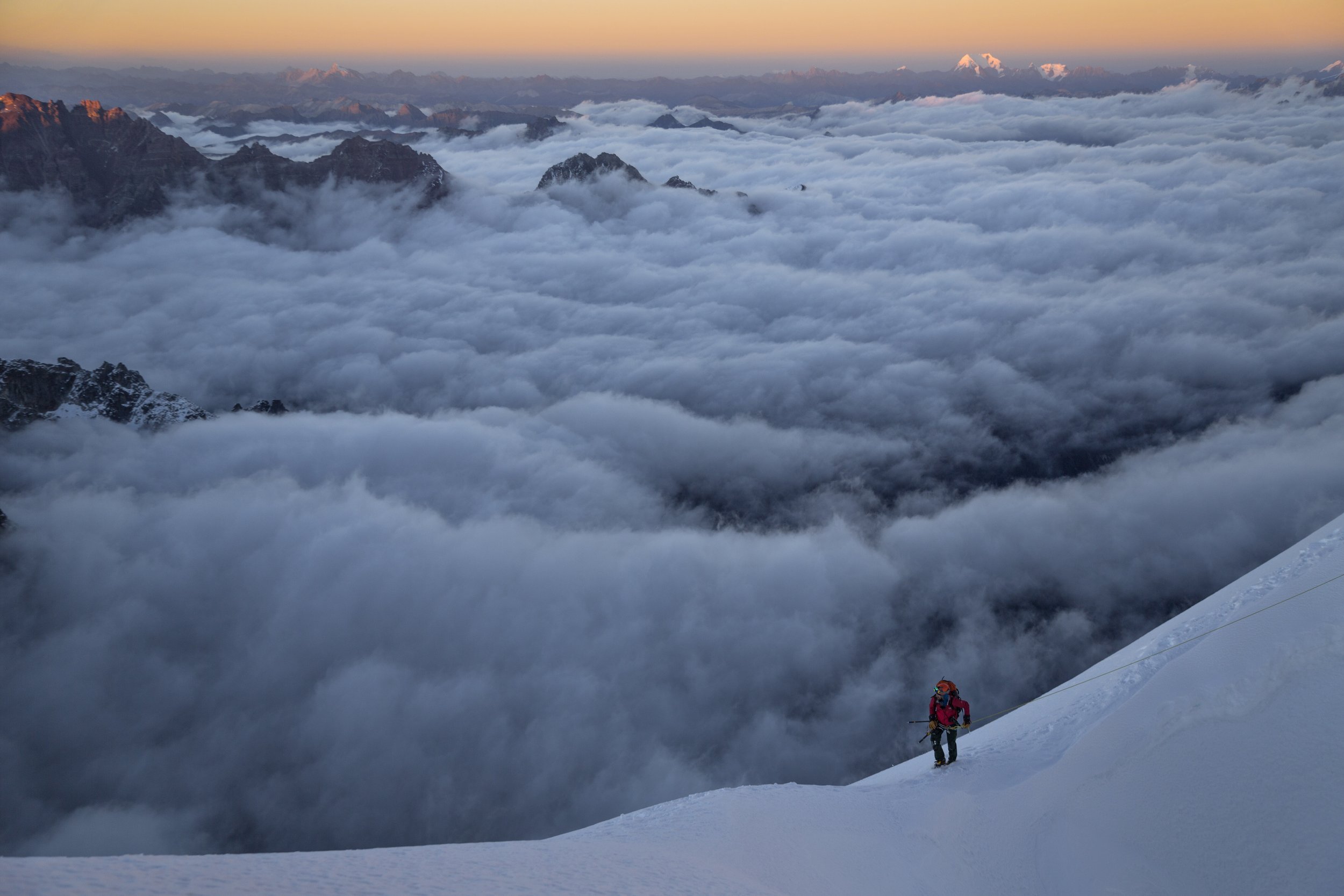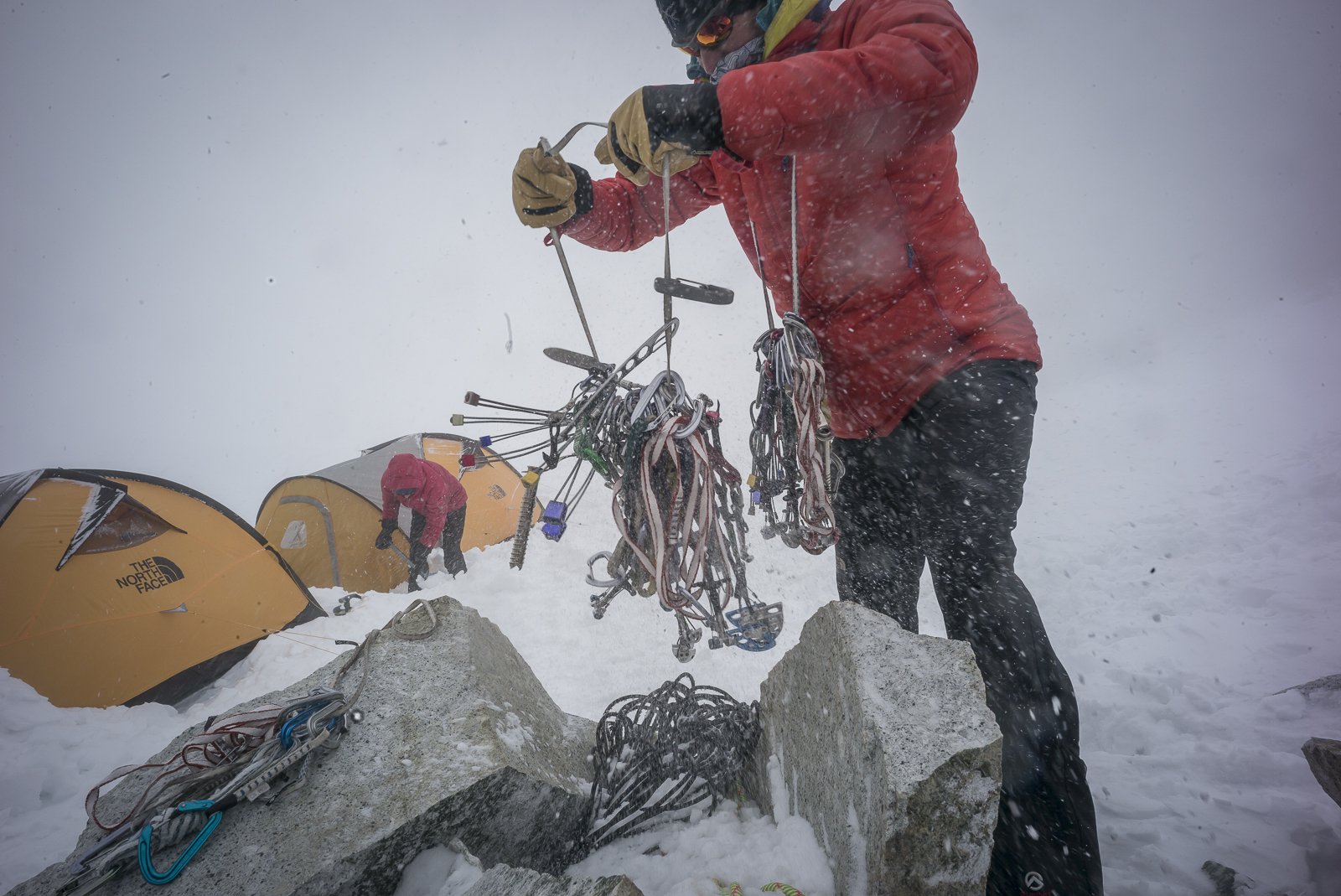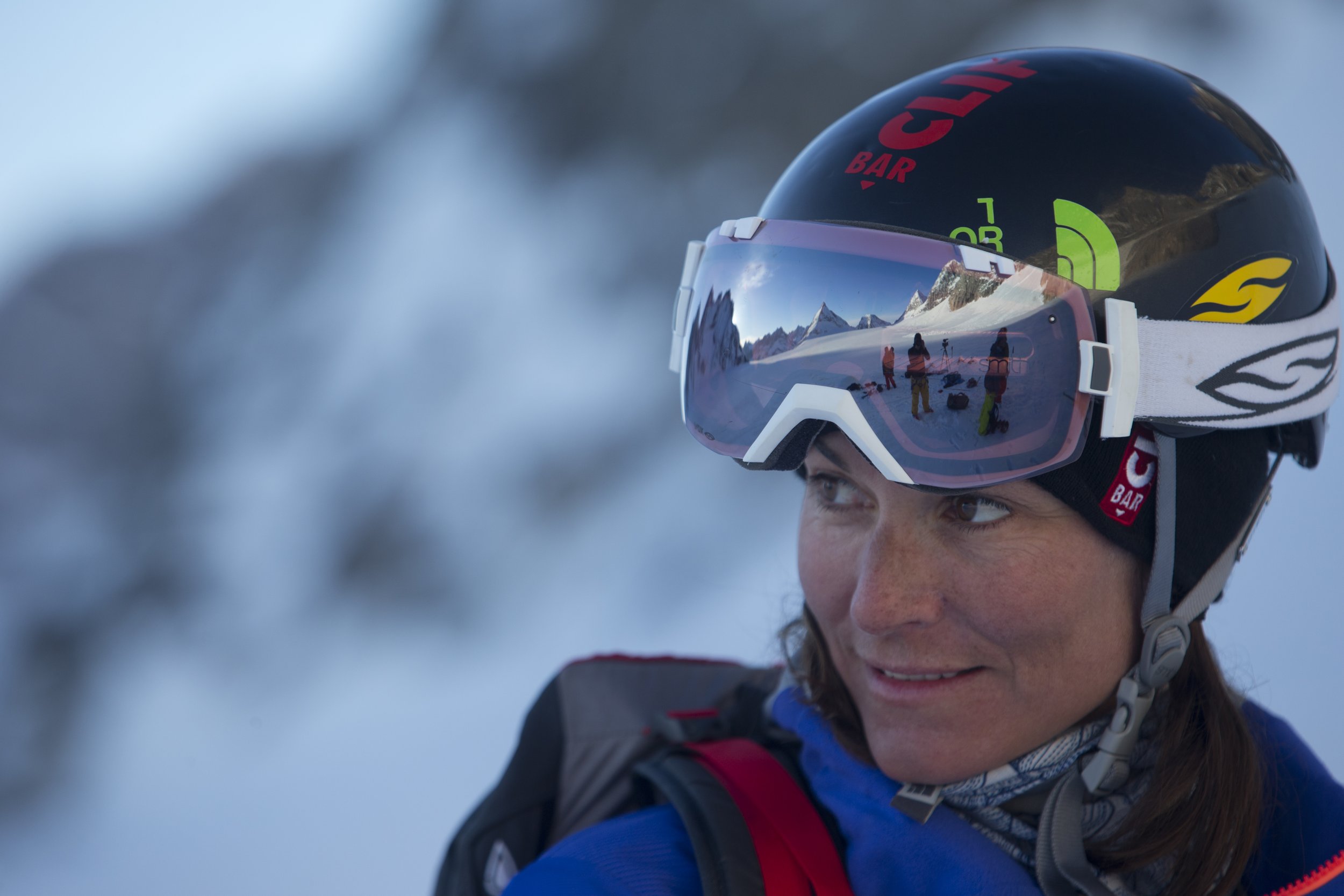Mountaineer Hilaree Nelson | National Geographic Live at Auditorium Theatre
Feature
(Originally published on Chicago Stage Standard)
National Geographic Live! series brings real critical concepts regarding our environment and our impact upon it and each other. The Auditorium Theater broadens its programming with sparking curiosity and important storytelling. Mountaineer Hilaree Nelson shares her thrilling story of leading a team of some of the world's elite climbers on a grueling attempt to climb a remote peak in Myanmar—and the physical and emotional toll they endured.
In the fall of 2014, a National Geographic team set out on what they knew would be a harrowing journey to the summit of Burma’s Hkakabo Razi to determine if it is indeed Southeast Asia’s highest point. What they didn’t realize was that the greatest obstacle wouldn’t be their dwindling rations, or the grueling jungle hikes, or the life-threatening hypothermia. It was the force of conflicting personalities that threatened to unravel the entire endeavor.
With the Auditorium Theater’s world class space, Nelson’s story is accompanied by photographer Corey Richards’s dramatic stills and clips from Renan Ozturk’s searing documentary Down to Nothingthat captures the epic scale of this expedition. The team included Nelson (leader), Richards (photography), Ozturk (videography), climber Emily Harrington, NatGeo author Mark Jenkins and basecamp manager Taylor Rees.
The audience turnout was diverse and really showcases the thirst some of us inherently have for knowledge, adventure, and strong female voices. To be awed and inspired is what this night held as the 70-minute presentation followed by question and answer delved deep into Nelson’s story and her personal perspective in regards to not only this expedition, but to adventure and passion on a larger scale.
Celebrated for being the first woman to summit Everest and its neighbor peak Lhotse, two 8,000 meter peaks in a single 24-hr period, Nelson is not your average adventurer. She’s also skied from the Himalayan summit of Cho Oyu in Tibet and climbed and skied several high peaks in Bolivia and Argentina. Elsewhere, Hilaree has cut turns on remote volcanoes in the Kamchatka Peninsula of Russia, Mongolia, Pakistan, Lebanon, as well as many first descents in the tight couloirs of Baffin Island. She was also named by Outside magazine as “One of the Most Adventurous Women in the World of Spots”, named a 2018 National Geographic Adventurer of the Year, and is a North Face athlete. Nelson pushes boundaries in a changing world and adds to National Geographic’s celebration of strong empowered women.
Nelson begins her talk with starting at the beginning of her life and the major influences that have lead her down this path of exploration. Exposure to nature at a young age growing up in the Pacific Northwest and being involved with basketball from 3rd grade through high school rounded her out in understanding teamwork and communication. She moved to France as a young adult and was approached by The North Face company. She attributes this to a full on “fake it till you make it moment”. It thrust her into this career filled with adventure while her personal life was happening - family, kids, etc.
After a trip to climbing Mount Everest and finding the popularity somewhat souring, that is where the creation of Burma’s Hkakabo Razi came from and what the team referred to as the “anti-Everest” expedition. Something closer to the earth - more raw and explorative than the queued climb up Everest.
Surviving the death train, hailing down an airplane on a tarmac, crossing country with sketchy motorbike drivers and being detained by immigration, the team seemed to hit obstacles back to back to back. In the remote mountains of southeast Asia almost to the base of the mountain, they had to cut two-thirds of their gear in order to make it to basecamp.
Everyone brought their own story that wasn’t shared until after – this hindered a lot of communication that would have saved a lot of unwanted feelings while under this stressful expedition. Corey Richard’s own story with an expedition experience the previous year that he was still processing. Mark Jenkins carried an emotional weight and purpose, as he had lost two friends previously and physically carried an image of the three of them together – perhaps an homage if the current expedition summited. Some of these stories contribute to the current story they all were apart of on this trip. What you bring to the table has a lot of influence about how you communicate, the driving purpose for each, and overall vibe of the team.
When tensions rose to a key make it or break it decision at 18 thousand feet, the team needed to be cut down in size. The five that left basecamp to ascend needed to be cut to three, ironically the two media guys had to be present since it was a National Geographic grant (and what would that look like if there wasn’t any images or video of the summit) and by decision Jenkins, a more veteran choice. The problem here was this decision was made without Nelson or Emily Harrington. Nelson spoke up to Jenkins in turn learned a very big lesson right then on the side of that ridge-line. The two statements in the documentary that she said both involved the word you. “You don’t think I can do it?” Nelson explains on stage that by directing this emotionally charged blame shifted everything. In those two sentences, Nelson says she gave all her power away. Those words weren’t confidence, they were seeking permission, approval and validation of her skill set. After coming so far as a team to hear that the split would be between the guys and the girls hit a chord within her, but not without realization of the conditions. As expedition leader, she took note and while the guys attempted the summit, her and Harrington stayed behind at 18k feet. Upon Jenkins, Richards and Ozturk return from their attempt, Nelson and Harrington prepped them as much as possible and tried to make recoup time as quick and efficient as possible. That move shows such strength in knowing that regardless you are team until the last step.
Nelson shares that a lot of decompression happened on the walk down to the village through the jungle. Many talks occurred and she suffered from a severe case of depression after this trip. The mystery still exists in Southeast Asia. When asked if she would ever return she explained with some hesitation that the politics have drastically changed, permitting is more difficult to obtain, but yes, she would be interested in trying again. Some key elements edits though like a helicopter at least one way for sure and not have to ride the “death train” again. Looking back, being mindful is far easier after the first go round when you are just focused on the adrenaline amped journey.
Nelson pauses and addresses what her takeaways from the journey were. She explained that the turning points in her life that she experienced leading up to the trip have reinforced this understanding of “the thinness between life and death”, to stay present and that with time she’s come to be more comfortable with knowing “I have something to bring to the table and to be confident with that”. As a female in a very dangerous sport and career path, there are ups and downs and biases that don’t make it easy. One poignant note along this train of thought she adds how important it is as a woman to 1) know your worth and 2) know how to communicate that. This wanted to make me stand up and scream yes. It’s something a lot of woman need to be reminded of and needs to be said more. It’s hard enough to know your talents and what you deserve, but what’s even more difficult is knowing how to communicate it in an effective way.
Additionally, another key point Nelson made during the question and answer segment was the idea that “I want to surround myself with people that give power – not those that take it away”. Retrospectively, it seems that her perspective is that this giant complex puzzle of planning the “anti-Everest” trip was a lot of planning from afar, which is exciting and holds drawbacks. “But that’s what exploration is! It’s what excites me.” You can’t plan for the unexpected and while her career holds a lot of risk, that is why the mental game is just as important, if not more important than the physical capability. It goes to say that her fitness routine is steeped in a variety of physical activity that gets her outside in nature more than the gym. “It’s more mental than physical,” she stresses. Staying up to date on knots, gear and training her mentality for exposure beyond the physical. Not only is it mental in preparation, but the harsh realities that come into play without us fully knowing it. Nelson explained not only suffered from depression after the 2012 expedition, but experience a traumatic event while being a guide on a heli-ski trip involving a woman who lost her life. This tragic event caused PTSD to be another barrier for Nelson to tackle before returning to the extremely active and dangerous sports she loves.
She left the audience with a quote and three last words: explore, dream, discover. Balancing an extreme, professional career and busy personal life with two sons is impressive, but moreover she is an advocate for women and women’s stories. By sharing her story, she voices the realities that struggles and obstacles can and will happen. Your definition of success will change many times throughout your lifetime. It is the moments that are most difficult that show true character. Nelson illustrates perseverance, humility, and learning will lead you down the right path. Whether it be across oceans or in your hometown, you are in control of your own story. I left the Auditorium Theatre feeling more empowered than ever, and I think that attributes to great voices sharing a shining thread that your own adventure is out there and it is within your grasp.
National Geographic Live! series 2019/2020 season will kick off this September with Between River and Rim: Hiking the Grand Canyon (Pete McBride: Photographer and Filmmaker and Kevin Fedarko: Writer). Be sure to stay tuned for more exciting series at the Auditorium Theatre by visiting https://www.auditoriumtheatre.org/.
